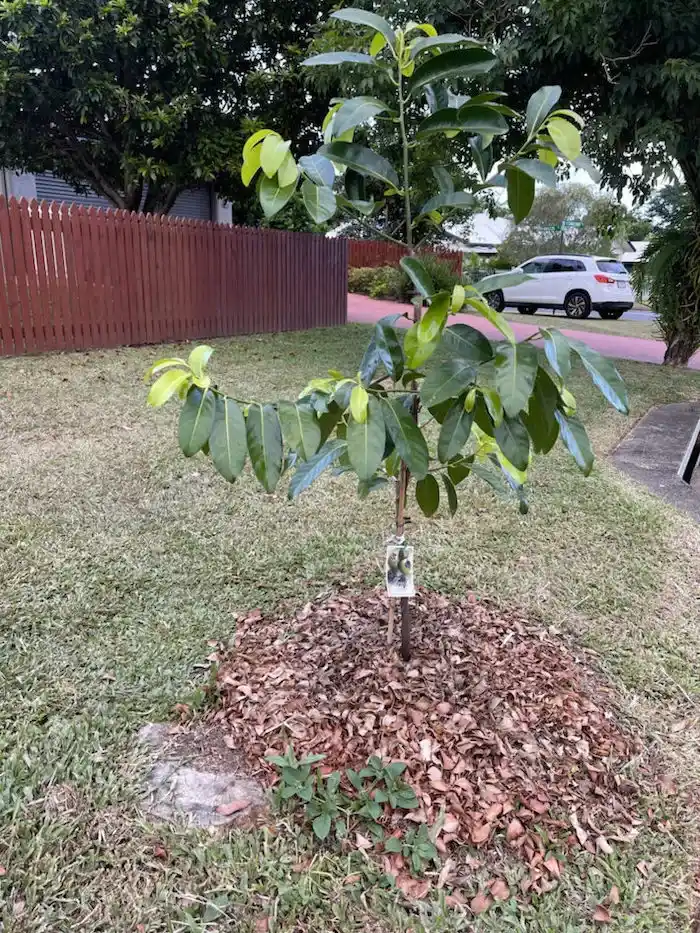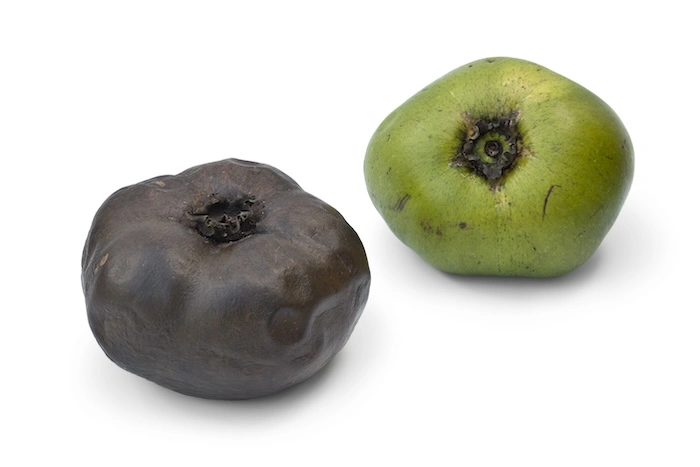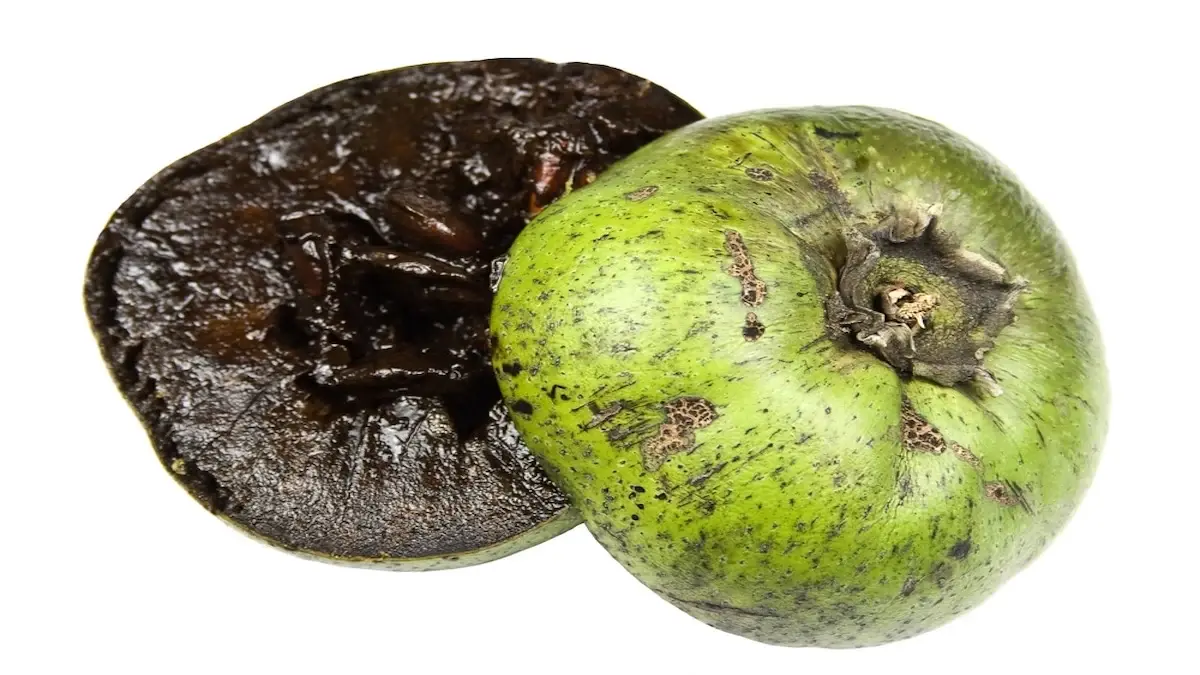Table of contents
Black Sapote
The black sapote tree will deliver you a tropical fruit often referred to as the ‘chocolate pudding fruit’.
The black sapote tree originated in Mexico. Subsequently, it spread to Central America, Cuba and the Philippines. It is cultivated in many tropical countries as a crop.
There are many improved varieties now available. However, the most popular varieties (cultivars) and their characteristics are as follows:
- Bernicker – Prolific fruiting with medium to large fruit.
- Mossman – Large round fruit with high pulp content.
- Maher – Large, flattened fruit with few seeds.
- Ricks Late – Produces heavy, late crops of high quality fruit.
- Superb – A North Queensland variety that has large quantities of small fruits (sometimes completely seedless).
Taking good care of your tree is fairly easy and will ensure a healthy crop of fruit.
Black Sapote Tree Height
This tropical evergreen can grow up to 12 metres (40ft) tall in outdoor tropical climates. Left to its own devices it will grow into a quite large tree.
Black Sapote Tree Size
It is a well-branched tree and does not need regular cutting. However, pruning is often done to keep the tree manageable in a suburban environment or to achieve better penetration of sunlight across the branches.
Black Sapote FAQ’s
Other names include Diospyros Digyna, Black Persimmon, Chocolate-Fruit, Chocolate Pudding Fruit, Schwarze Sapote, Zapote Prieto and the Chocolate Persimmon.
This tree can be grown from cuttings, but it is very difficult. The black sapote does not root well from cuttings. We recommend you avoid this strategy.
Black Sapote Tree Australia
The black sapote tree can fruit all year around in the tropics. Consequently, there is no problem planting your black sapote seedling direct into the ground. That is what it wants!
Black Sapote Growing Conditions
Black Sapote trees can grow in a range of soil types but they really love moist sandy loam.
However, make sure your location drains well and is not too swampy. So if this is a problem, you could use soil to build a mound to plant the tree in, guaranteeing drainage. Also, locate your tree in full sun, away from other trees or buildings.

Black Sapote Tree Propagation
Time needed: 3 minutes
How to Grow Black Sapote from Seed
- Remove seeds
Cut a ripe fruit in half and remove seeds. Make sure you desire the fruit and the tree that the seeds come from.
- Clean Seeds
Rinse seeds and leave them in a bowl for 24 hours. Then rinse again to remove any remaining coating.
- Prepare
Fill a standard pot with potting mix and water the potting mix.
- Sow
Make a hole 5cm (2in) deep. Drop in the seed and cover with potting mix.
- Germination
Leave the pot in a sunny location and water regularly. Do not overdo it, as your seed will rot if your medium is permanently soggy.
- Transplant
After a month or two transplant your seedling into a new pot or to your preferred location in the garden.
Black Sapote Tree Care
Fertilising
Black sapote is not a ‘hungry’ fruit tree. We apply an organic fertiliser just once each year, during the dry season.
Growing in a pot
If you grow a black sapote in a pot, it is likely to grow quickly. Consequently, within a few years it will need a much bigger pot, or a permanent home outside a pot, if you want it to continue to grow and increase fruit production.
Watering
Water regularly throughout the dry season. However, during the ‘wet’ they will be fine without any additional water.
Pests and Diseases of the Black Sapote
Black sapote tree care includes looking out for pests and disease. Apart from scale, it has very few pests or diseases. Mealybugs, whitefly and aphids can also be a problem, but the black sapote is fairly pest resistant.
However, regular application of ‘white oil’ can help address these pests. White oil is an effective organic pesticide that you can make at home.

Black Sapote Taste
The best thing about the black sapote tree is the fruit. Indeed it is a tropical delight often referred to as the ‘chocolate pudding fruit’. Hence it is delicious to eat and has many health benefits.
The fruit can be eaten fresh, but peel off the skin before consuming. It can also make a delicious ice cream. In addition, it is also used in mousses, cakes and cheesecakes.
Black Sapote Benefits
There are many health benefits of eating black sapote. Accordingly it helps strengthening the immune system, improving digestion, promoting weight loss and improving your cardiovascular health.
Weight Loss
Carotenoids and catechins in the fruit work to turn fat into energy. As black sapote is a complex carbohydrate, it provides long-term satiety due to the fact it takes longer time to digest. As a result, this makes it a good weight loss food.
Fibre
Black sapote has a large amount of dietary fibre. As a result, it helps with digestion and regularity. In addition, it also assists with the peristaltic movement of the intestine.
Immune System
The fruit is loaded with vitamin C. This is proven to strengthen immunity to help the body in fight toxins and diseases.
Antioxidants
The fruit of the black sapote tree is high in antioxidants. Antioxidants help to fight free radicals or bad cells in the body.
Other Tropical Fruits
- Custard Apple
- Dragon Fruit
- Grumichama
- Guava Tree Care
- Jaboticaba Tree
- Kumquat Tree
- Lemonade Tree
- Mamey Sapote
- Mulberries
- Natal Plum
- Passion Fruit
- Paw Paw Tree
- Rambutan
- Star Apple Tree
- Watermelon


Comments
4 responses to “Black Sapote Tree Care Guide”
[…] Black Sapote […]
[…] Black Sapote […]
[…] Black Sapote […]
[…] Black Sapote […]